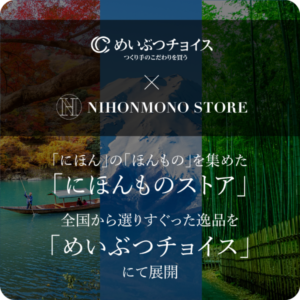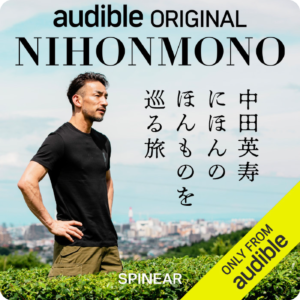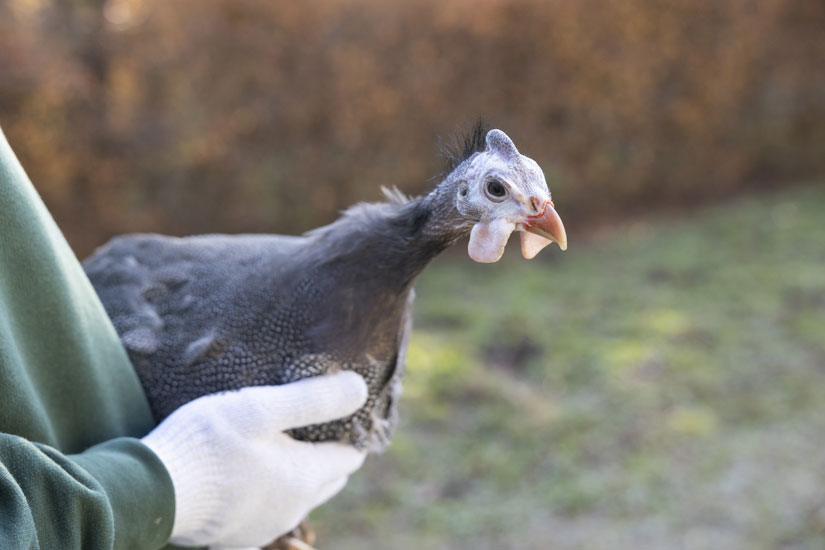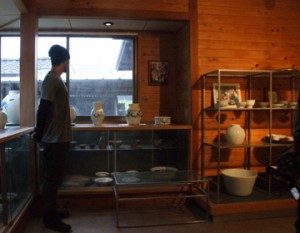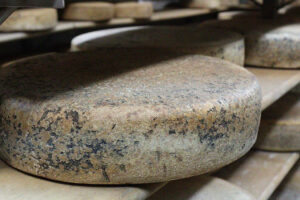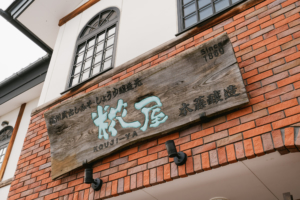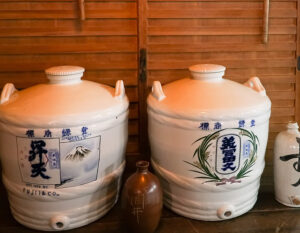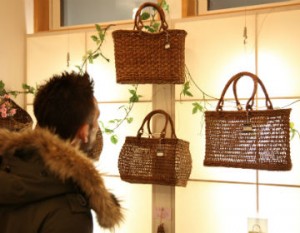In French cuisine, it is called “panda d’or” and is known as the “queen of edible birds” due to its refined and delicate flavor. At Ishiguro Farm in Hanamaki City, Iwate Prefecture, which is also famous for its hot springs, panda d’or have been raised for approximately 50 years, taking advantage of the rich natural environment. Their meat is served at renowned restaurants throughout the country.
The only farm in Japan specializing in Japanese quail, located in a hot spring resort in the mountains.

Approximately 10 km northwest of the center of Hanamaki City, Iwate Prefecture.Nestled in the mountains beyond the “Hanamaki Onsenkyo” hot spring resort, which stretches along the valley of the Ou Mountains, lies the specialized quail farm “Ishiguro Farm.” The farm was founded by the grandfather of the current representative director, Yukichiro Ishiguro, who settled in this area after the war and began cultivating farmland. Eventually, the farm started raising chickens to supply a restaurant operated by relatives in Tokyo.
The farm began raising pheasants approximately 50 years ago. The impetus came when the family’s restaurant opened a branch in Morioka City, Iwate Prefecture, and they decided to create a signature dish that embodied the essence of Iwate. The first candidate was a dish featuring the prefectural bird of Iwate, the Japanese quail. However, the second-generation owner, Eijiro Ishiguro’s son, Shinjiro Ishiguro, attempted to raise quails but found it difficult to breed them, and there was also significant opposition to eating the prefectural bird.
At that time, he heard through a connection that “in France, the ‘horohoro bird,’ which belongs to the same family as the pheasant, is eaten as food.” He obtained a male and female from a zoo in Saitama Prefecture and began raising them. This was in 1973.
Raising the African-native horohoro bird in snowy Iwate

The guinea fowl is a bird of the pheasant family native to Africa. It has been little modified and remains close to its original form, but it has no strong flavor or odor, and is characterized by its tender, juicy, and refined taste.In Europe, particularly France, it is widely enjoyed as a premium ingredient, from high-end restaurants to home kitchens, and is often referred to as the “queen of game birds.” In Japan, it was first introduced during the Edo period by Dutch ships, and the name ‘porporato’ from that period is said to be the origin of the Japanese name “horohoro bird.”
When Ishiguro Farm began raising Holo Holo birds, there were no other examples of them being raised for food in Japan, so it was a trial-and-error process from the start. They began by keeping them in the existing chicken coops on the farm, but the nervous Holo Holo birds would panic at the sight of foxes through the wire mesh or even the slightest noise, causing them to gather in one spot and be crushed to death.Additionally, being native to Africa, they were sensitive to cold, and some died from being crushed while huddling together to stay warm. “Can we really raise ho-ho-birds in this snowy mountain area?” Amidst doubts and uncertainties, Shinjiro’s trial and error continued for several years.
A “floor heating chicken coop” utilizing the natural environment of a hot spring area

“How to protect the delicate birds from the cold.” The solution to this difficult problem was closer than he thought. It was the hot spring that was bubbling up on the property.
One day, while soaking in the “natural hot spring bath” he had installed at his home, Jinjiro thought, “What if I use this hot spring water for heating the chicken coop?” After trial and error, he succeeded in creating a “fuel-free floor heating system” by circulating the hot spring water through pipes installed under the chicken coop floor. Additionally, he renovated the chicken coop into a spacious indoor facility and adopted a “free-range” system, allowing the birds to move around freely and live stress-free.
In this way, Shinjiro established a stable production method for raising chickens. The subsequent economic boom further boosted his business, and the chickens became a sought-after luxury ingredient, with orders pouring in from restaurants owned by relatives and hotels in the Tokyo metropolitan area.
“The unique flavor of domestically produced chickens.” The third-generation challenge.

Born and raised as the third generation of the Ishiguro Farm, Koichiro did not immediately take over the family business after graduating from high school but instead became a ski instructor.He later joined the team of world-renowned skier Yuichiro Miura and traveled the globe on ski expeditions. He returned to Iwate and took over the family farm in the mid-1990s, just before turning 30. At that time, Ishiguro Farm was struggling due to the aftermath of the bubble economy collapse, with orders from its main clients—relatives’ stores and hotels—plummeting sharply.
“We needed to find new customers,” Yukichiro thought. He traveled to Tokyo several times a month, carrying a cooler box filled with Holo Holo chicken meat, and visited French and Italian restaurants. He was often turned away at the door, but some restaurants with a focus on authentic cuisine and chefs who had returned from France expressed interest, asking, “Is there domestic Holo Holo chicken?”
“Some chefs told me to come back after closing, and when I returned late at night, they had even gathered their chef colleagues to meet me,” recalls Koichiro with nostalgia. Some of the young chefs who were apprentices at the time are now top-class chefs using the quail meat. “The connections we made back then continue to be a great support for us today,” he smiles.
The livestock industry is seeing a decline in self-sufficiency rates.

The chickens at Ishiguro Farm are raised on a feed mix free of antibiotics and rice. As a result, they have no unpleasant odor or off-flavors, and their fat is light and crisp. “Some people say that when you crisply roast the skin, it smells like senbei (rice crackers),” says Koichiro with a smile.
When they first started raising chickens, they used only standard commercial feed, but switched to the current method around 2003. The catalyst was the statement, “Livestock farming is lowering the country’s food self-sufficiency rate.”
“A professor at Tokyo University of Agriculture told me that the livestock industry relies heavily on imported feed. The more we raise animals, the more the self-sufficiency rate drops. I had always thought that by raising livestock, I was contributing to increasing self-sufficiency, so it was a shock,” he recalls.
At the same time, Iwate Prefecture was implementing a “rice production reduction policy” to limit the production of rice for human consumption. Ishiguro Farm’s rice fields were also targeted, but Koichiro decided to switch to growing feed rice. He not only used the rice as feed but also incorporated rice husks and straw into the manure, beginning efforts toward a circular agricultural system.
The safety and taste unique to domestically produced products.

It has been over half a century since Ishiguro Farm began raising Japanese quail. While other farms have started raising them domestically, Ishiguro Farm is the only one that claims to be a “specialized farm.”
Currently, the farm ships approximately 40,000 birds annually. While thigh meat is the most popular cut for chicken, breast meat is said to have lower demand. However, Ishiguro Farm’s holoholo chickens receive orders for all parts of the bird. In particular, the breast meat is highly praised, with some chefs describing its juicy, tender, and mild flavor as “similar to whitefish.”
“It is truly encouraging as a producer to hear so many professionals say that our chickens are delicious,” says Yukichiro Ishiguro.Especially when French chefs recognized our chickens, it was deeply meaningful.“ As he mentioned, there is significant interest from restaurants in France, the birthplace of the Horo Horo chicken. When the renowned French restaurant ”Trois Glaces,” which has maintained three Michelin stars for over 50 years, decided to close its Japan branch, they requested to use Ishikuro Farm’s Horo Horo chicken for their final dinner menu and even invited the farm to the restaurant.
Furthermore, in 2025, the farm won the “Terroir Award” in the Japanese edition of the world-renowned gourmet guidebook “Gault & Millau,” which honors locally rooted food production. The award recognized the farm’s sustainable agriculture practices, such as using geothermal heat for chicken farming and cultivating feed rice with chicken manure, which contribute to the production of high-quality meat.
Aiming for Sustainable “All-Domestic Feed”

Ishiguro Farm has established Japan’s first-ever “edible quail farming,” gaining the trust of renowned chefs for its rarity and quality. However, the journey has not been smooth sailing. In 2023, an outbreak of avian influenza at the contracted hatchery resulted in the culling of all chicks. It took a year to rebuild production and resume shipments.
However, as if to save the day, the eldest son, Eitaro, graduated from university in Tokyo and returned home to take over the family business. Now, the eldest daughter is also helping out. Yukichiro jokes, “We were all scattered before,” but he can’t help but smile at the sight of his capable children.

Mr. Koichiro has a goal of raising chickens using only domestically produced feed. In other words, he aims to achieve a 100% self-sufficiency rate. According to statistics from the 2023 fiscal year, Japan’s feed self-sufficiency rate stands at approximately 27%. The majority of this is “roughage” such as grass and rice straw consumed by cattle, while “concentrated feed” like grains and corn accounts for just 13%.At Ishiguro Farm, they currently rely heavily on imported feed.
Still, “We have plenty of farmland, and some people in the area have started growing corn for feed. It’s not impossible,” says Yukichiro, looking ahead. Even if it’s difficult to achieve immediately, he plans to take one step at a time through trial and error. The history of Ishiguro Farm has been woven in this way. “There’s still so much we can do to create something better.We’ll do our best, and then leave the rest to our sons,” says the father with a smile. Shigekazu nods in agreement. The story of Ishiguro Farm and the ho-ho-ho birds will continue.
